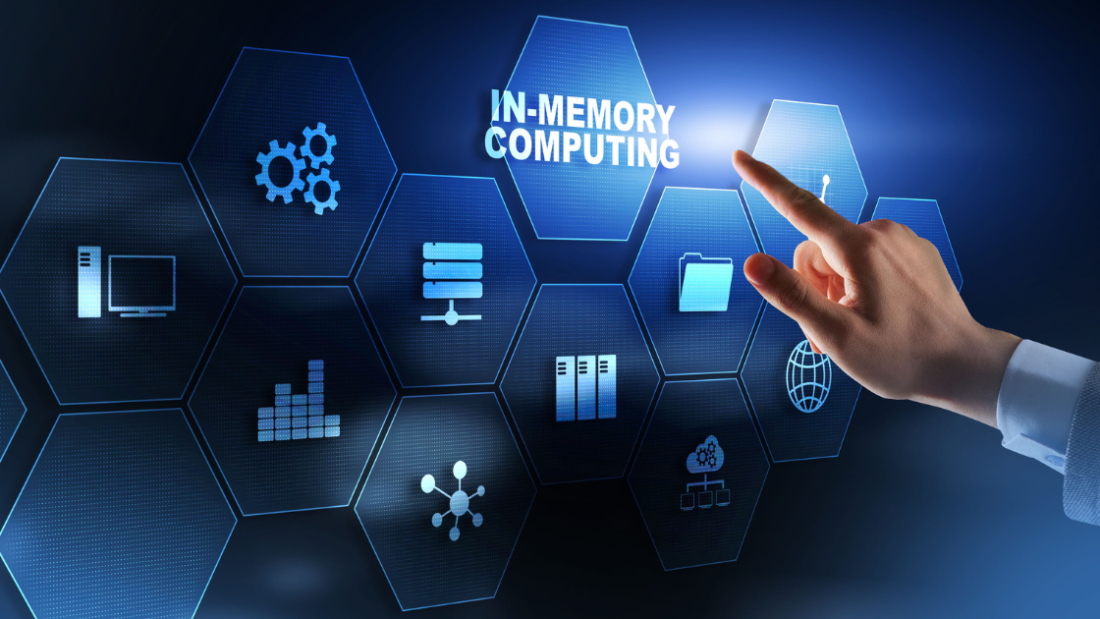In today’s digital landscape, the demand for advanced identity verification tools is more crucial than ever. With the rise of online transactions and data breaches, ensuring secure and accurate verification processes is paramount. These tools offer cutting-edge solutions to authenticate individuals swiftly and reliably, safeguarding against fraud and identity theft. Leveraging sophisticated technologies like biometrics and artificial intelligence, these tools provide a robust defense mechanism in an increasingly interconnected world. By implementing these advanced identity verification tools, businesses can enhance security measures, build trust with customers, and streamline operations efficiently.
The Growing Need for Advanced Identity Verification
Digital Transactions
The surge in digital transactions has heightened the demand for secure identity checks. More online services require comprehensive identity verification to ensure user authenticity.
With the increase in online activities, reliable identity verification methods are crucial to prevent unauthorized access and protect sensitive information.
Identity Theft and Fraud
The proliferation of identity theft and fraud incidents underscores the necessity for robust identity verification processes. Criminals exploit vulnerabilities in traditional verification methods, making it imperative to adopt advanced solutions.
Secure identity verification processes are essential to combat evolving fraud techniques and safeguard individuals’ personal data from malicious actors.
Regulatory Compliance
Stringent regulatory compliance demands mandate the implementation of advanced identity verification solutions. Organizations must adhere to industry standards and regulations by employing comprehensive identity verification suites.
Failure to meet identity verification requirements can result in severe penalties and reputational damage, emphasizing the importance of investing in compliant identity verification software solutions.
Overview of Modern Verification Tools
Types of Tools
Modern identity verification tools encompass a range of technologies, including biometric authentication, document verification, and facial recognition. These tools offer diverse options for businesses to choose from based on their specific needs.
Biometric authentication utilizes unique physical characteristics such as fingerprints or facial features to verify an individual’s identity. This technology ensures a high level of security by authenticating users based on their biological traits.
Document verification involves scanning and verifying official documents like IDs, passports, or driver’s licenses. By cross-referencing the information on these documents with external databases, companies can validate the authenticity of an individual’s identity.
Facial recognition technology analyzes facial features to confirm a person’s identity. This tool is widely used in various industries for secure access control and remote identity verification processes.
Integration of Technologies
The advancement of identity verification tools lies in the integration of multiple technologies to enhance accuracy and efficiency. By combining biometric authentication with document verification, businesses can establish a multi-layered approach to identity verification, reducing the risk of fraudulent activities.
Moreover, the integration of artificial intelligence (AI) and machine learning algorithms enables these tools to adapt and improve over time. AI-powered systems can detect anomalies in user behavior patterns, flagging potential risks and enhancing the overall security of the verification process.
User Experience Design
In the design of modern verification tools, user experience plays a crucial role in ensuring seamless interactions and increasing adoption rates. User-friendly interfaces, clear instructions, and intuitive workflows are essential components that contribute to a positive user experience.
Biometric Technologies for Security
Fingerprint Recognition
Fingerprint recognition is a widely used biometric modality due to its uniqueness and reliability. Each person has distinct ridge patterns on their fingertips, making it a secure form of identification. The technology captures an individual’s fingerprint and matches it against stored templates for authentication.
Fingerprint recognition offers high accuracy rates, with false acceptance and rejection rates being extremely low. This ensures that only authorized individuals can access sensitive information or restricted areas. Moreover, the speed of verification is impressive, providing quick and efficient security measures.
Facial Recognition
Facial recognition technology analyzes facial features such as the distance between the eyes, nose, and mouth to create a unique biometric profile. It is commonly used in various sectors, including law enforcement, airports, and mobile devices for enhanced security measures.
One of the key advantages of facial recognition is its non-intrusive nature. Individuals can be identified from a distance without physical contact, enhancing user convenience. However, concerns regarding privacy have been raised due to potential misuse of facial data and surveillance implications.
Iris Scanning
Iris scanning technology utilizes the unique patterns in an individual’s iris for identification purposes. The intricate structure of the iris provides a highly secure form of biometric authentication. By capturing high-resolution images of the iris, the system creates a template for comparison during verification processes.
Iris scanning boasts exceptional accuracy rates, making it a reliable choice for security applications. The technology is also resilient to changes over time, ensuring consistent identification results. Despite its effectiveness, some individuals may have reservations about privacy issues related to storing sensitive biometric data.
AI and Machine Learning in Verification
Speed Enhancement
AI algorithms play a crucial role in speeding up identity verification processes. By automating tasks, they reduce processing time, making the verification process quicker for users.
Machine learning models can analyze vast amounts of data within seconds, enabling rapid verification of identities. This leads to efficient and streamlined verification processes.
Fraud Detection
Machine learning is pivotal in identifying patterns of fraudulent behavior during the verification process. These algorithms can detect anomalies and suspicious activities, enhancing security measures.
By continuously learning from new data, machine learning systems become more adept at recognizing fraudulent patterns, ensuring a higher level of security for identity verification.
Adaptive Technology
AI technology has the potential to adapt and evolve verification techniques over time. It can learn from past experiences to improve accuracy and identify new fraud trends.
With continuous advancements, AI-powered verification tools can stay ahead of fraudsters by updating algorithms and enhancing security features based on emerging threats.
Document Verification Methods
OCR Technology
OCR technology, or Optical Character Recognition, is a widely used method for identity verification. It involves scanning identity documents and extracting text data electronically. This process enables id verification providers to quickly verify the authenticity of documents.
Implementing OCR technology enhances the efficiency of verification processes by automating the extraction of information from various documents. By swiftly analyzing data, organizations can reduce manual errors and ensure accurate verification results.
Hologram Detection
Hologram detection is another crucial method in identity verification processes. It involves verifying the presence and authenticity of holographic features on identification documents. This advanced technique helps id verification providers detect counterfeit documents effectively.
By utilizing hologram detection, organizations can significantly enhance their fraud prevention measures. The ability to identify fake holograms ensures that only legitimate documents are accepted during the verification process.
Real-time Document Verification
Real-time document verification plays a vital role in mitigating fraud risks. By instantly validating identity documents during transactions or user registrations, organizations can prevent fraudulent activities promptly. This proactive approach significantly reduces the chances of unauthorized access or fraudulent transactions.
The integration of real-time document verification solutions enables businesses to authenticate customer identities swiftly and accurately. This not only enhances security measures but also improves the overall user experience by streamlining verification processes.
Challenges in Document Verification
Verifying documents from diverse sources and formats poses significant challenges for organizations. Different countries have varying document formats, security features, and validation requirements, making it complex to standardize verification procedures. The rise of sophisticated counterfeiting techniques further complicates the verification process.
Addressing these challenges requires id verification providers to continuously update their technologies and algorithms to adapt to evolving fraud tactics. Organizations must invest in advanced solutions that can handle a wide range of document types while maintaining high levels of accuracy and security.
Benefits of Using Advanced Verification Tools
Enhanced Security Measures
Advanced verification tools offer enhanced security measures through multi-factor authentication, biometric recognition, and artificial intelligence algorithms. These tools ensure a higher level of security by verifying identities through multiple layers of authentication.
Utilizing advanced verification tools significantly reduces the risk of identity theft and fraudulent activities. By implementing multi-factor authentication, users are required to provide more than one form of verification, such as passwords, biometrics, or SMS codes, adding an extra layer of security.
Biometric recognition technologies like facial recognition or fingerprint scanning provide a secure and reliable way to verify individuals’ identities. These technologies are difficult to forge or manipulate, enhancing the overall security of the verification process.
Reduction in Operational Costs
One of the key benefits of using advanced verification tools is the reduction in operational costs. Automated verification processes streamline identity verification procedures, eliminating the need for manual checks and reducing human errors.
By automating the verification process, organizations can save time and resources that would otherwise be spent on manual verification tasks. This leads to increased efficiency and productivity within the organization, resulting in cost savings in the long run.
Automated verification tools also help reduce the likelihood of errors and inaccuracies in the verification process. By eliminating manual data entry and human intervention, organizations can ensure accurate and reliable identity verification results.
Improvement in Customer Trust and Satisfaction
Advanced verification tools play a crucial role in improving customer trust and satisfaction. By providing a seamless and secure verification experience, organizations can enhance customer confidence in their services.
Reliable verification processes instill trust in customers by ensuring that their personal information is protected and secure. This leads to increased customer satisfaction and loyalty towards the organization.
Organizations that prioritize data security and privacy through advanced verification tools are more likely to attract and retain customers. By demonstrating a commitment to protecting customer data, organizations can build a positive reputation and establish long-term relationships with their clientele.
Applications Across Various Sectors
Finance Sector
Financial institutions heavily rely on advanced identity verification tools to prevent fraud and comply with stringent regulations. These tools streamline customer onboarding processes, ensuring KYC (Know Your Customer) and AML (Anti-Money Laundering) compliance. By automating identity checks, financial organizations can mitigate risks and safeguard sensitive financial information.
Healthcare Industry
In the healthcare sector, advanced verification tools play a crucial role in protecting patient data and ensuring regulatory compliance, such as HIPAA in the United States. These tools enable healthcare providers to verify patient identities accurately, reduce medical identity theft, and improve overall data security. Implementing advanced verification solutions can enhance patient trust and confidentiality.
Travel and Hospitality
Within the travel industry, advanced identity verification tools are revolutionizing the way businesses operate. From online booking platforms to airport security checkpoints, these tools verify traveler identities swiftly and securely. By incorporating biometric authentication and facial recognition technologies, airports and airlines can enhance passenger experience while strengthening security measures.
Compliance and Security Enhancements
The integration of advanced verification tools in various sectors has significantly enhanced compliance and security protocols. By leveraging cutting-edge technologies like AI and machine learning, organizations can detect fraudulent activities in real-time, ensuring regulatory adherence. These tools also help in reducing manual errors, improving operational efficiency, and maintaining a robust security posture.
Transformative Use Cases
Remote Onboarding: Advanced verification tools enable businesses to remotely onboard customers by verifying their identities through secure digital channels.
Biometric Authentication: Implementing biometric authentication methods such as fingerprint scanning or facial recognition enhances security while providing a seamless user experience.
Fraud Prevention: By utilizing advanced verification solutions, organizations can proactively identify and prevent fraudulent activities, safeguarding both their assets and customers’ data.
Future Trends in Identity Verification
Automation Advancements
Advanced identity verification tools are set to witness a significant shift towards increased automation. This evolution will streamline the verification process, enhancing efficiency and accuracy. With the integration of artificial intelligence and machine learning, these tools will be able to swiftly verify identities with minimal human intervention.
The automation advancements in identity verification technology will enable businesses to conduct researching identity verification solutions more effectively. By automating tasks such as document verification and facial recognition, organizations can reduce manual errors and improve overall customer experience. This trend is crucial in today’s fast-paced digital environment where speed and security are paramount.
Decentralized Identity Solutions
The future of identity verification features is likely to embrace decentralized solutions leveraging blockchain technology. These innovative approaches offer enhanced security and privacy by allowing individuals to have control over their personal data. By decentralizing identity verification processes, users can securely share their information without relying on centralized authorities.
Integrating decentralized identity verification tools will revolutionize how online transactions are authenticated. This shift towards blockchain-based solutions ensures data integrity and minimizes the risk of identity theft or fraud. As more businesses adopt these technologies, the traditional reliance on centralized databases for verifying identities will diminish.
Privacy-Preserving Verification Methods
In the realm of identity verification providers, there is a growing emphasis on privacy-preserving methods for future applications. With increasing concerns about data privacy and protection, organizations are exploring innovative ways to verify identities without compromising sensitive information. Privacy-enhancing technologies such as zero-knowledge proofs and homomorphic encryption are gaining traction in the identity verification service flow.
Implementing privacy-preserving identity verification software options ensures that user data remains secure throughout the verification process. These methods allow for seamless authentication while safeguarding individuals’ privacy rights. As data breaches become more prevalent, the demand for robust privacy-preserving verification methods will continue to rise.
Summary
In a world where security threats are ever-evolving, embracing advanced identity verification tools is crucial. From biometric technologies to AI and machine learning applications, these tools offer enhanced security and efficiency across various sectors. The benefits of using such tools are vast, promising increased protection against fraud and unauthorized access while streamlining processes for both businesses and individuals. As we look ahead to future trends in identity verification, staying informed and adopting these advancements will be key to safeguarding sensitive information and ensuring secure transactions.
Take charge of your security today by exploring and implementing advanced identity verification tools in your operations. Stay proactive in adapting to the latest trends and technologies to fortify your defenses against potential threats. Your commitment to robust identity verification practices will not only protect your interests but also contribute to a safer digital environment for all.
Frequently Asked Questions
What are advanced identity verification tools?
Advanced identity verification tools are sophisticated technologies and methods used to authenticate the identity of individuals. These tools go beyond traditional methods like passwords and security questions to provide more secure and reliable verification processes.
How do biometric technologies enhance security in identity verification?
Biometric technologies use unique physical characteristics like fingerprints or facial features to verify an individual’s identity. By utilizing these distinct traits, biometric systems offer a higher level of security compared to traditional methods, reducing the risk of fraud and unauthorized access.
What role do AI and Machine Learning play in identity verification?
AI and Machine Learning algorithms analyze vast amounts of data to detect patterns and anomalies, improving the accuracy and efficiency of identity verification processes. These technologies enable real-time fraud detection and enhance the overall security of verification systems.
Why is document verification an essential method in identity verification?
Document verification involves verifying official documents such as IDs or passports to validate an individual’s identity. This process adds an extra layer of security by cross-referencing information on the document with external databases, ensuring the authenticity of the provided details.
In what sectors can advanced verification tools be applied?
Advanced verification tools find applications across various sectors including finance, healthcare, e-commerce, and government services. These tools help organizations comply with regulations, prevent fraud, streamline processes, and enhance customer trust by providing secure and seamless user experiences.









